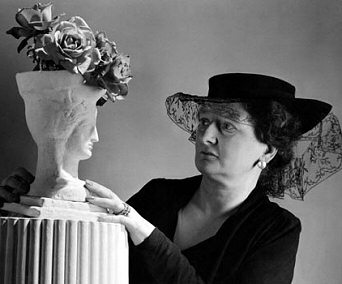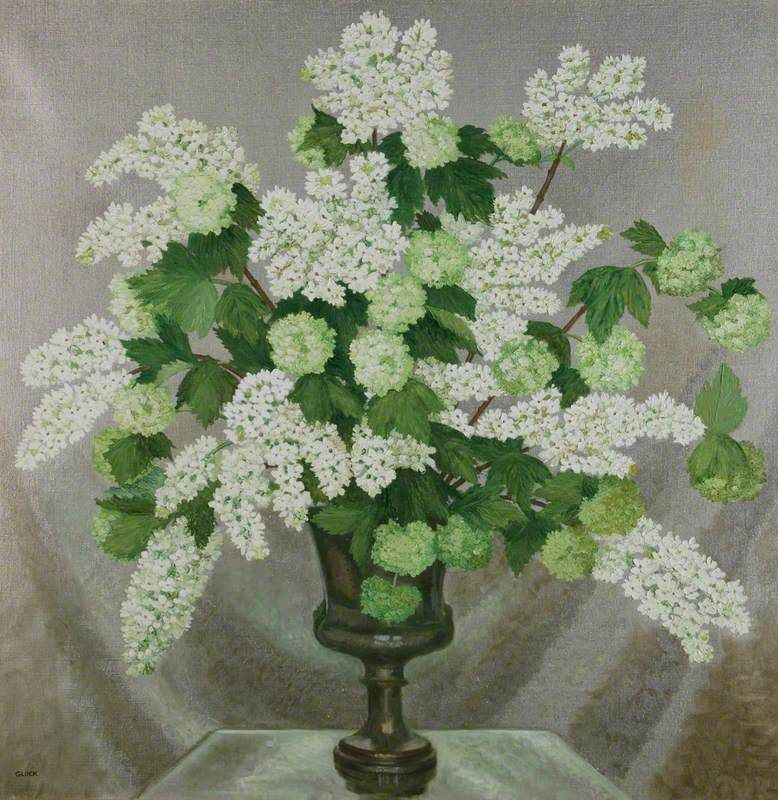

Partner Gluck
Queer Places:
64 S Audley St, Mayfair, London W1K 2QT, Regno Unito
Winkfield Place, Winkfield Ln, Winkfield, Windsor SL4, Regno Unito
 Constance
Spry OBE (5 December 1886 – 3 January 1960) was a British educator, florist
and author in the mid-20th century.
Constance
Spry OBE (5 December 1886 – 3 January 1960) was a British educator, florist
and author in the mid-20th century.
Constance Spry was born Constance Fletcher in Derby in 1886, eldest child and only daughter of George Fletcher and his wife Henrietta Maria Fletcher.[1] After studying hygiene, physiology and district nursing in Ireland, she lectured on first aid and home care for the Irish Women's National Health Association. She married James Heppell Marr in 1910 and moved to Coolbawn, near Castlecomer. In 1912, their son Anthony Heppel Marr was born.
After the beginning of World War I in 1914, Constance Marr was appointed secretary of the Dublin Red Cross. In 1916, she left both Ireland and her husband, and moved to Barrow-in-Furness with her son Anthony to work as a welfare supervisor. In 1917, she joined the civil service as the head of women's staff (welfare and medical treatment) at the Ministry of Aircraft Production. In 1921, she was appointed headmistress of the Homerton and South Hackney Day Continuation School in east London, where she instructed teenage factory workers in cookery and dressmaking, and later flower arranging. In 1926, she married her second husband Henry Ernest Spry.
Spry gave up teaching in 1928, to open her first shop, "Flower Decoration", in 1929. After securing a regular order from Granada Cinemas, she caused a sensation in fashionable society by creating an exquisite arrangement of hedgerow flowers in the windows of Atkinsons, an Old Bond Street perfumery. Constance Spry ransacked attics for unusual objects to use as containers and drew inspiration from the Dutch 17th- and 18th-century flower painters, while she popularized unusual plant materials to offset flowers, like pussy willow, weeds and grasses and ornamental kale.


Lilac and Guelder Rose, by Gluck, 1932-37

Constance Spry,
by Gluck
Gluck met Spry in 1932 when designer and interior decorator Prudence Maufe sent Gluck an arrangement by Spry to paint. Spry was a leading figure in cultivating a fashion for white flowers, and often used Gluck's paintings to illustrate her articles. Many of Spry's customers also commissioned flower paintings from Gluck.
When she opened a larger shop in South Audley Street in Mayfair in 1934, Spry was already employing seventy people. In the same year, she published her first book, Flower Decoration, and established the Constance Spry Flower School at her new premises.
In 1936, "Flower Decoration" created the flower arrangements for the royal weddings of the Duke of Gloucester to Lady Alice Christabel Montagu-Douglas-Scott and the more private wedding of the Duke and Duchess of Windsor in June 1937. When World War II began in 1939, Spry resumed her teaching career and lectured to women all over Britain. In 1942, she published Come into The Garden, Cook, hoping to help the war effort by encouraging the British to grow and eat their own food.
In 1946, she opened a domestic science school with her friend, the accomplished cook Rosemary Hume, at Winkfield Place, at Cranbourne in Winkfield, Berkshire. Constance lived at Orchard Lea, across the road, and then over the stable block at the Place. In 1953, Spry was commissioned to arrange the flowers at Westminster Abbey and along the processional route from Buckingham Palace for Queen Elizabeth II's coronation. The Winkfield students were asked to cater a lunch for foreign delegates for whom Hume and Spry invented a new dish – coronation chicken. She was appointed OBE in the 1953 Coronation Honours.
At Winkfield Place, Spry devoted years to the cultivation of particular varieties of antique roses, which she was instrumental in bringing back into fashion; David Austin's first rose introduction, in 1961, was named after her and is considered to be the foundation of his "English rose" series.[4] In 1956, she and Hume published the best-selling Constance Spry Cookery Book, thereby extending the Spry style from flowers to food. On 3 January 1960, she slipped on the stairs at Winkfield Place and died an hour later. Her last words were supposedly, "Someone else can arrange this".[5]
In 2012 English Heritage marked Spry's tenure at 64 South Audley Street with a blue plaque.[3]
Spry's books remained in print for many years after her death and her floristry business thrived. An exhibition entitled Constance Spry: A millionaire for a few pence at the Design Museum, London, in 2004, was controversial in many quarters and resulted in the resignation of the museum's chairman, inventor James Dyson, who considered the show unworthy.[6]
Constance Spry's influence in floristry remains strong in the modern era. Luxury florist Nikki Pierce cites her as an inspiration. [7]
My published books: